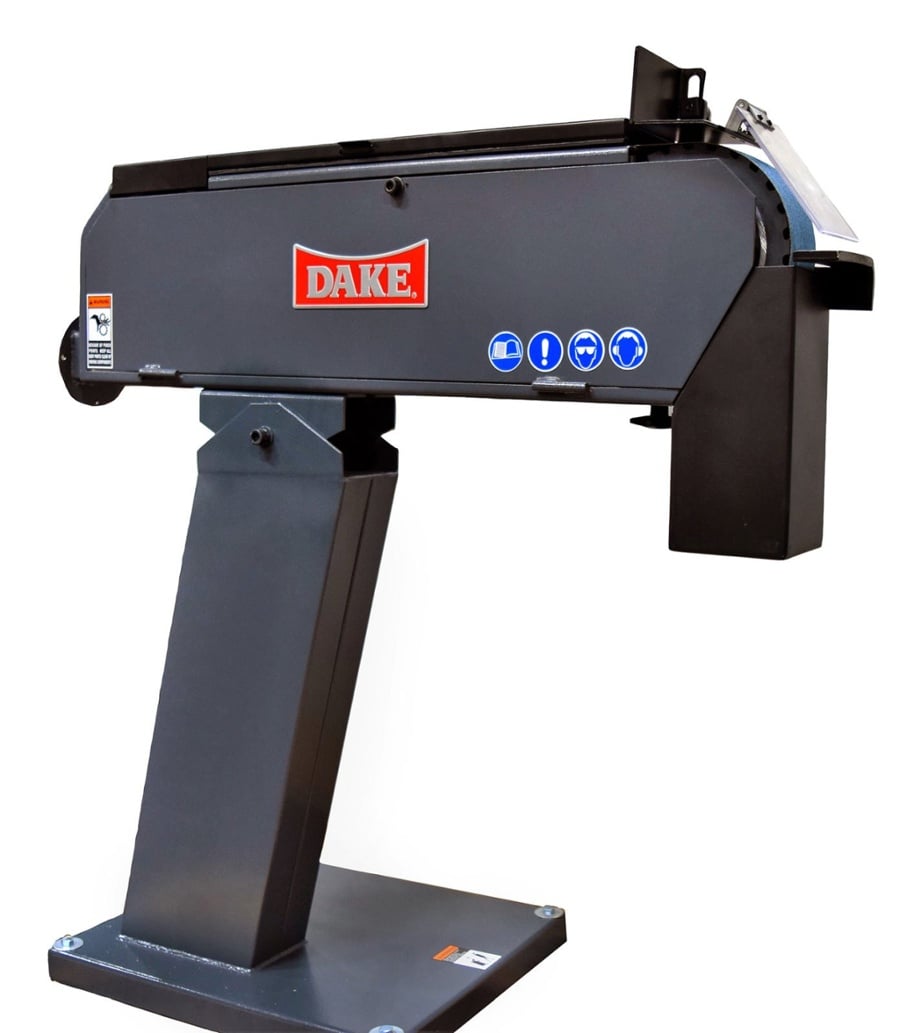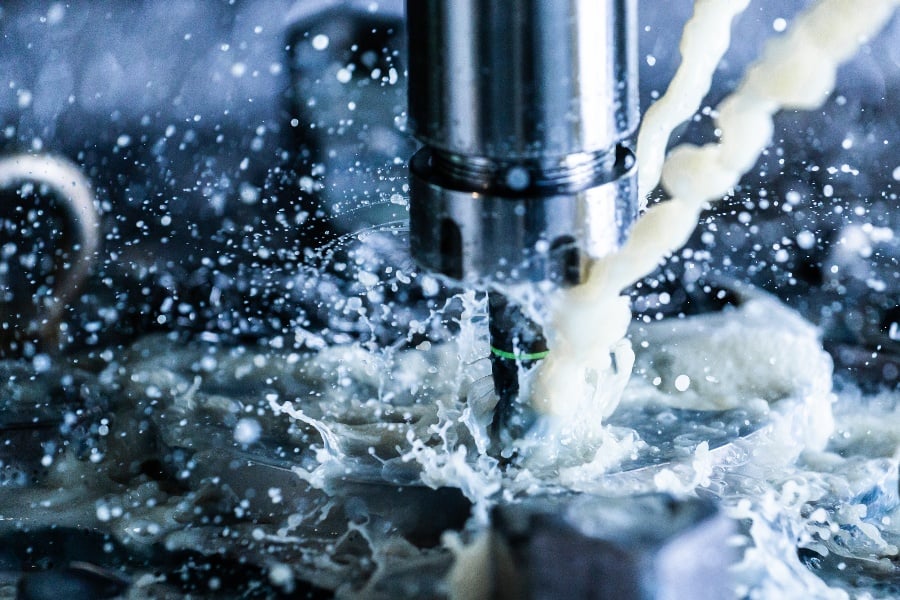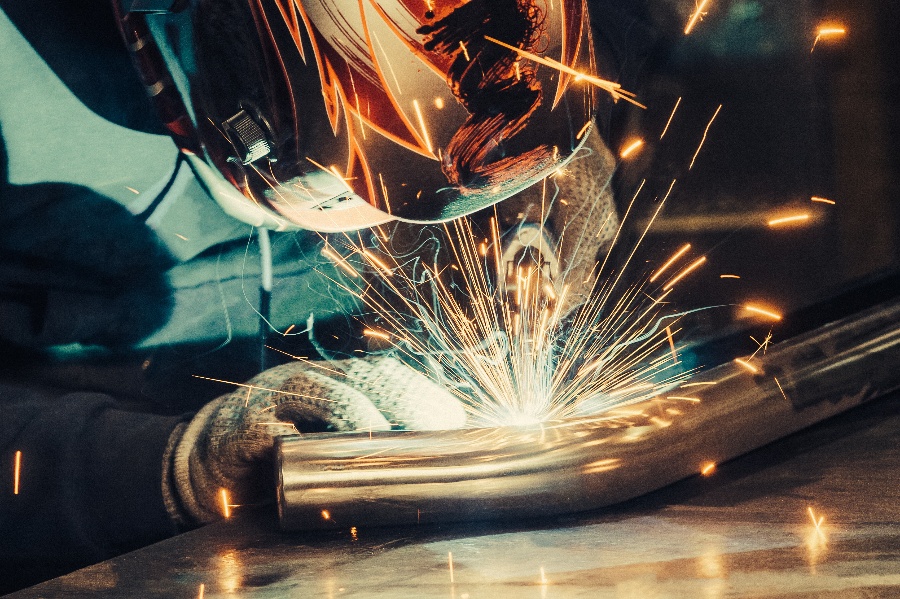There are many different types of press machines that can be used to shape metals for various projects.
Arbor presses, hydraulic presses, laboratory presses, and C-frame bench presses are just a few of the products we carry here at Dake. Each one serves a different purpose, and they all deliver tonnage to form metals into your desired shape.
However, there are ways to expedite the press cycle on these machines, and our experts here at Dake will walk you through the process.
Stop Wasting Time
How quickly metal pressing can be done depends mostly on the machine being used and the material that is being pressed. There are many factors to take into consideration including dwell time, actions, and the total time of transforming a blank into the desired piece.
Because the process of metal forming takes time, there can be a lot of time wasted. By expediting the pressing process even by a mere second or two, you can ramp up your productivity level and boost your profits.
Without further ado, let’s explore some of the ways you can speed up the process of pressing metal.
1. Optimize Ram Transitions
The first way that you can save some time is by optimizing the spot where the ram transitions to pressing speed from a rapid speed. The location of the ram should be adjusted to right above the work spot. Let’s look a bit more closely at this.
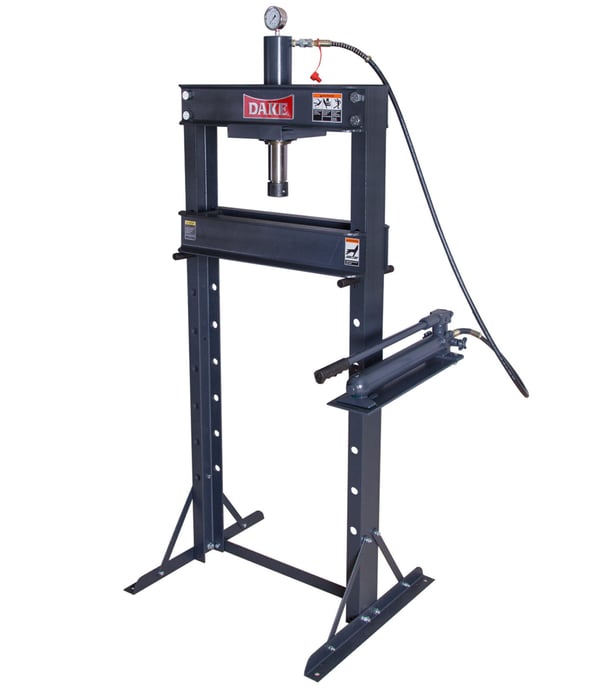 Hydraulic press machines use linear transducers that give you the precise location of the ram at every point throughout the stroke.
Hydraulic press machines use linear transducers that give you the precise location of the ram at every point throughout the stroke.
This allows you to adjust the ram transition exactly how you want it. If you are operating with an older press model that does not have this modern technology, it will shut off certain valves to slow down the speed of the ram. This will allow it to transition to the appropriate pressing speed by the time it reaches the metal.
The older models have their limitations, but modern hydraulic presses allow the operator to choose exactly where the ram transition needs to occur.
Making sure that your machines have properly adjusted ram transitions will help to trim down the time it takes to complete a piece.
2. Ram Reversal Is Not Always Your Friend
If the piece you are creating does not require any dwell time, then you may be tempted to take this opportunity to use ram reversal to save some time. However, this is not always the best route to follow. In this case, the reversal is based on the position of the ram, not the total tonnage.
You can perform ram reversals by programming hard stops to force the ram to continue traveling down more than necessary to reach a hard stop. You will need to include a cushion to help absorb the added force. Pressure from the over-extended tonnage will build up and provide the energy needed to reverse the ram back up.
The problem with this process is that once a hard stop is reached, it takes more time to build up the force needed to move the ram up again.
Exceeding the necessary tonnage means that you will have to wait for oil compression, tonnage buildup, decompression, and the reversal distance. This leads to an average press cycle delay of 1 to 2 seconds.
3. Use the Correct Press Machine
Some folks may be inclined to believe that one hydraulic or arbor press can handle every job that gets tossed their way. However, this is not true, and if you operate with that mindset, you are setting yourself up for slow production time. When it comes to presses, one size does not fit all.
While you can add an upgraded circuit to your press in an attempt to speed up pump flow, that’s not always a good idea. Doing this may even hurt the overall performance of the machine. The best way to improve your production time is to ensure that you are using the right press for the job.
Understand the application and the requirements your press machine needs to meet to complete a project.
Here at Dake, we offer a wide range of presses to accommodate every type of project. We can even build a customized machine to suit your specific requirements.
If you specialize in specific metal parts, it’s best to get a press that is ideal for that job instead of one that can take on bigger tasks that you don’t normally perform.
4. Automation Is the Future
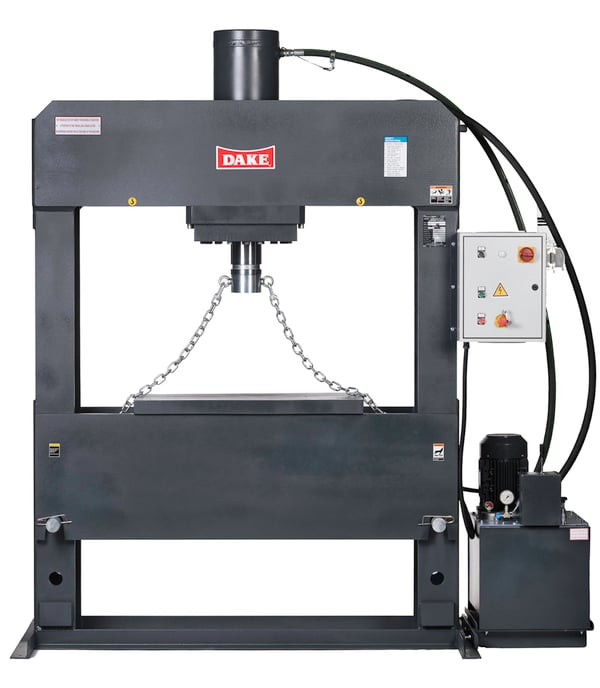 If you really want to speed up the production line, then your best bet would be to get a hydraulic press. Not only do hydraulic presses allow you to adjust the ram transitions precisely, they also help to reduce bottlenecks in the workflow. In addition, they are also safer.
If you really want to speed up the production line, then your best bet would be to get a hydraulic press. Not only do hydraulic presses allow you to adjust the ram transitions precisely, they also help to reduce bottlenecks in the workflow. In addition, they are also safer.
With much of the pressing process being automated by a hydraulic press, the risk of being cut by a piece of shape sheet metal is greatly reduced, and operator fatigue is also lessened.
A perfect example of this would be our Three Phase Dura-Press Force 200 model. It is operated by a joystick making is simple to use and safe for metalworkers of all skill levels.
5. It’s All in the Training
Our final tip for expediting the press cycle is to properly train your employees. Whether they have 10 years of experience or they are just beginning an apprenticeship, how you train your team to work on press machines can have a major impact on production time.
Press operators need to be familiar with the machine’s manual and limitations. They also need to be aware of the applications and materials that are being used.
While this may seem like a given, you may be surprised to know just how many people are winging it in metalworking shops. By streamlining your training techniques, you can cut down on wasted time during the day.
However, before starting on any metalworking project, even if you are a seasoned metalworker, refresh your memory by reviewing these safety guidelines from the Occupational Safety and Health Administration (OSHA).
Get in Touch
Want to learn more about our press machines or request a custom model for your next project? Get in touch with our experts at Dake today.

